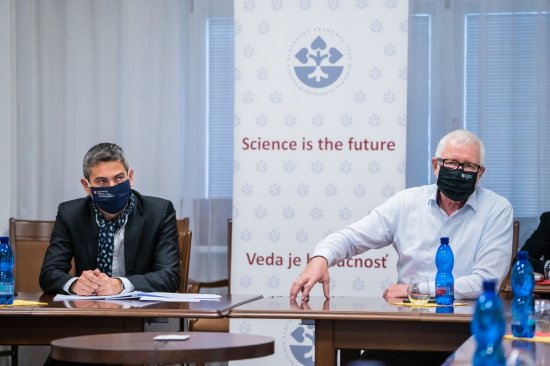Ľudovít Paulis discussed the SAS transformation with representatives of 1st and 2nd scientific section

On October 29, 2020, State Secretary of the Ministry of Education, Science, Research and Sport of the Slovak Republic Ľudovít Paulis joined the meeting of the directors of the SAS institutes, Chairmen of the Scientific Councils, members of Committees of the SAS Assembly and members of Assembly of the SAS for the 1st and 2nd scientific section. Meeting with the same program for the 3rd scientific section will take place on November 10, 2020. The autumn meeting from the series of meetings, which is regularly convened by the Presidency of the SAS, was moved online due to the current epidemiological situation. The single main point of the meeting was the transformation of the SAS into public research institution.
“I highly appreciate that the State Secretary has accepted the invitation to our meeting and I believe that today we can answer many open questions regarding the transformation,” said President of the SAS prof. Pavol Šajgalík during his introductory speech, and then gave the floor to the State Secretary.
Ľudovít Paulis emphasized, that the current period offers a great opportunity to bring this process to a successful conclusion: “There is a great social demand for the SAS transformation, which is also supported by the program statement of the current government. It is an opportunity for both you as well as the ministry and therefore I offer you our full cooperation.”
Within the transformation process of the SAS, activities of the transformation commission were renewed and SAS established a work group which cooperates with the Ministry of Education and the management of the SAS, seeks for agreements and sets individual procedures. Its current goal is to prepare theses for the amendment to the SAS Transformation Act. At the same time, State Secretary and the President of the SAS recommended preparation of an amendment to the SAS Act.
The discussion included issues related to the financing and accounting system of the public research institution, setting of the evaluation criteria, overall transformation plan, the optimal size of the future public research institution and the status of PhD. students.
Original source: News at SAS
 Contact
Contact Intranet
Intranet SK
SK






